Updated: 18-May-2020
This name is confused in some texts as "Lamplong".
-Lamplough presented a 6-cylinder rotary engine at the Olympia in Paris in 1911. It was two-stroke with blower and supercharger in a cylindrical box at the rear to force the mixture to the cylinders with slight pressure.

“Lamplough rotary engine”
-A clearer illustration is provided here. The exhaust valve was on the head of each cylinder and was controlled.
-The intake was done by the piston uncovering some ports at the end of the lower stroke, thus there was a sweep and cleaning of gases. This way burning was much better and aided by the centrifugal force of the engine rotation.
- It is said that Lamplough also built a barrel type engine.
From Appendix 6: It turns out that it is the name of what would be the Lockheed, once Americanized the last name. See also Lockheed.
-At the Hiller Museum there is the two-cylinder engine that is mentioned above. It is perfectly preserved.
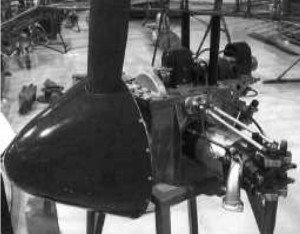
“Lamplough -Lockheed-”
-After the rotary mentioned in the main text, we now present an engine that is known as the 2-stroke “Multiple-Compound”.
-It is a V-cylinder engine but not all of the cylinders carry out a power stroke.
-Having eight cylinders, four act with compressor strokes and the other four with power strokes.
-The first prepare the mixture under pressure to introduce it into the power cylinder by carrying out the convenient sweep.
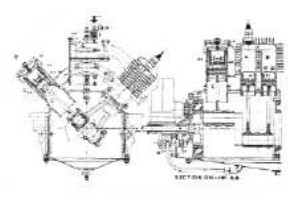
“Lamplough Multiple-Compound, schematic drawing”
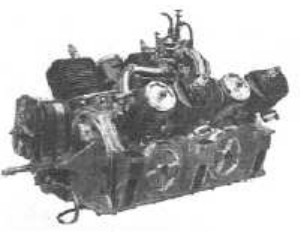
“Interesting engine aspect”
Author's note: Without a doubt there is an error in the information source about Lamplough USA relating it to Lockheed. See Longhead
-In aviation Lamplough is known for a rare rotary but no less rare is another engine - it does not seem aviation - with a somewhat atypical construction, which we bring here as a curiosity and to look for construction traces with the really aeronautical one.

“Aspect of the singular Lamplough”
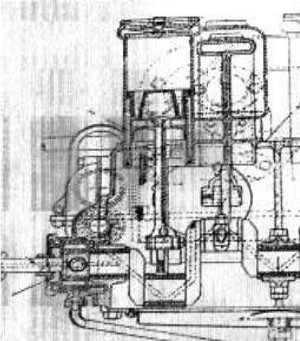
“Group of front cylinders”
-It seems that the front cylinder prepares the pressure mixture to introduce it into the twin power cylinders.
-The connecting-rod system of the first group is articulated, one part driving a piston and the other a shirt.

"The connecting-rod system of the first group is articulated"
-The main part has two pistons with an articulated connecting rod, similar to the Szidlosky engine and others like that of the Iso motorcycle.
-But Lamplough's Rotary Radial engine for aviation is still more important to us.
-In the main text a barrel engine of this builder is mentioned, because here we have it. It is an engine called “Positive Explosion Turbine”
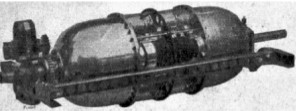
“Lamplough barrel engine”
From Appendix 10: Another photo of the Compound has recently arrived thanks to a collaborator. With some better defined detail.

“Two-stroke Compound engine”
-In an ad of this brand we find, in addition to the two-stroke engines of the main text, the surprise that Lamplough owns patents on internal combustion aviation turbines.
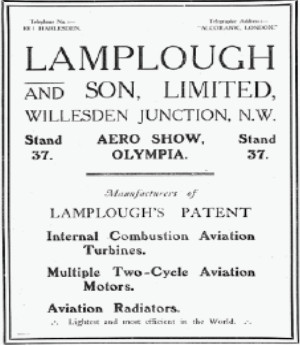
“Lamplough ad”
-It will be interesting to locate the type of turbines they planned.
Engines of LAMPLOUGH
Model: 2 cyl. boxer
Arquitecture: 2-stroke2-cylinder Horizontally opposed
Cooling:
Total Displacement:
Bore / Stroke:
Power:
Weight:

"Lamplough 2 cylinder boxer"
Model: 6 cyl. rotary
Arquitecture: 2-stroke6-cylinder Rotary
Cooling: Air
Total Displacement:
Bore / Stroke:
Power:
Weight:

"Lamplough 6-cylinder rotary engine"
Model: Barrel
Arquitecture: Barrel
Cooling:
Total Displacement:
Bore / Stroke:
Power:
Weight:

"Lamplough barrel engine"
Model: Compound-multiple
Arquitecture: 2-stroke8-cylinder V-Engine
Cooling:
Total Displacement:
Bore / Stroke:
Power:
Weight:

"Lamplough 2-stroke Compound engine"
Model: gas turbine
Arquitecture:
Compressor/s:
Combustion chambers:
Turbines:
Power / Thrust: / ---
Weight:


